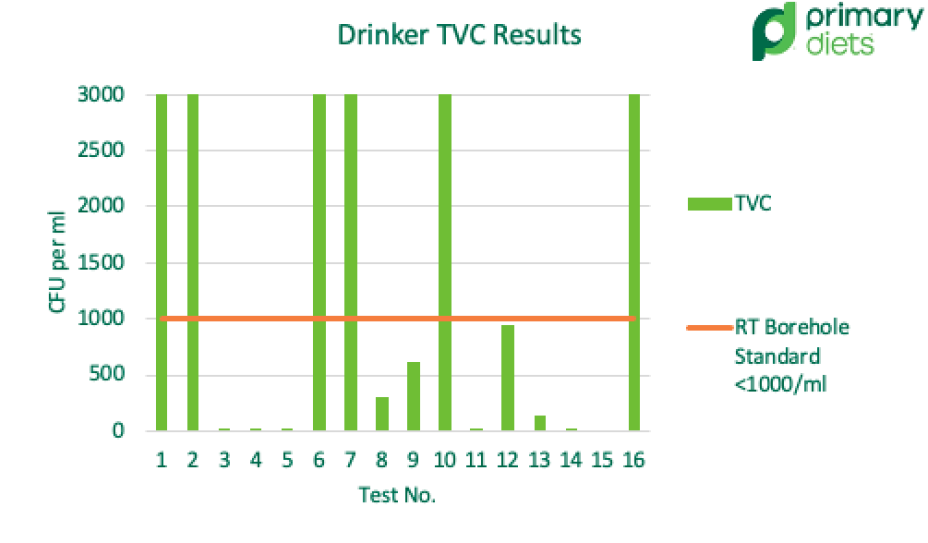22nd June 2022
Don’t underestimate the impact of water quality & availability
Don’t underestimate the impact of water quality & availability
Testing water quality and ensuring adequate water availability is critical warns piglet feed specialists Primary Diets.
With the growing interest in adding medication and water products, such as acidifiers, to water, in some cases to plan for successfully removing zinc, Primary Diets recommends a thorough review of water provision using both at source and in-room water testing in addition to installing temporary drinkers as needed.
“If there are issues with either water quality or accessibility both pre and post-weaning, dehydration and other problems can manifest which can make it very difficult to remove zinc successfully”, explains Dr Sadie Douglas, a nutritionist with Primary Diets.
Test for microbial loading
Not just availability, but good quality water is also crucial, according to the company. Annual testing at source is mandatory for non-mains supplied water within Red Tractor regulations, with no recommendations for mains water testing. However, the company urges producers to test regardless of source, particularly when planning for zinc removal.
“Testing at two or more locations on the unit can help to pinpoint where any contamination may be occurring”, Dr Douglas explains. “At the source, water may have very little or no microbial load whereas, by the time water gets to the drinker, the microbial load could be high meaning there is a problem somewhere that needs to be dealt with. We have found, for example, that unchecked header tanks are the perfect environment for bacteria to grow and breed.
“If there is a high microbial load in the samples, which could be E. coli, passing from the tank through into the rooms, then it’s a major problem for all pigs. In addition, anything sugar-based that you add to the water, including some medications, will feed the bacteria that’s present so regular water sampling and excellent cleaning protocols can’t be encouraged enough”.
“We have been working with our customers and offer a water testing service as part of our zinc removal strategy with them; to date over 100 samples have been tested. One measurement tested for is total viable count (TVC) which provides an indication of the load of all micro-organisms (bacteria, yeast, mould; both good and bad) in the water. Our results have shown that in 38% of samples taken at the drinker, the TVC levels can be considered very high (greater than 1000 colony forming units (CFU). It’s important to use these results along with additional tests such as those looking for coliforms (group of bacteria including E. coli) to give an indication of overall water quality.”
Maintaining water quality
Acidification in water can decrease water pH and reduce the growth of pathogens in the water system; specialist companies should be consulted for advice. However, acidification in water can also work well in combination with acidification in feed and is particularly relevant where a reduction in zinc is being introduced.
“Acidification encourages a low pH in the stomach of young pigs, which creates an environment that is unfavourable to pathogen growth. Separately, protein digestion begins in the stomach and requires an enzyme called pepsin, which needs a low pH to activate. So, by acidifying the water, we can lower the stomach pH and improve protein digestion which prevents undigested protein reaching the hind gut where bacteria such as E. coli would ferment, causing diarrhoea”, Dr Douglas explains.
“We fully appreciate there are a mix of farms, water systems vary massively and treating issues can be difficult, but we cannot stress enough the influence water quality, palatability and availability can have on feed intake and subsequent growth. Water can often be an overlooked nutrient or one which is taken for granted, but it should take more of a priority in daily routines, particularly with the impending need to remove zinc”, Dr Douglas concludes.
